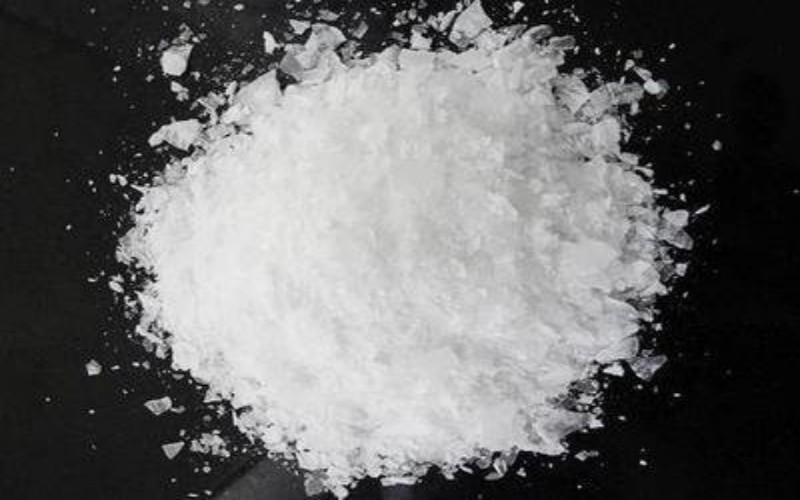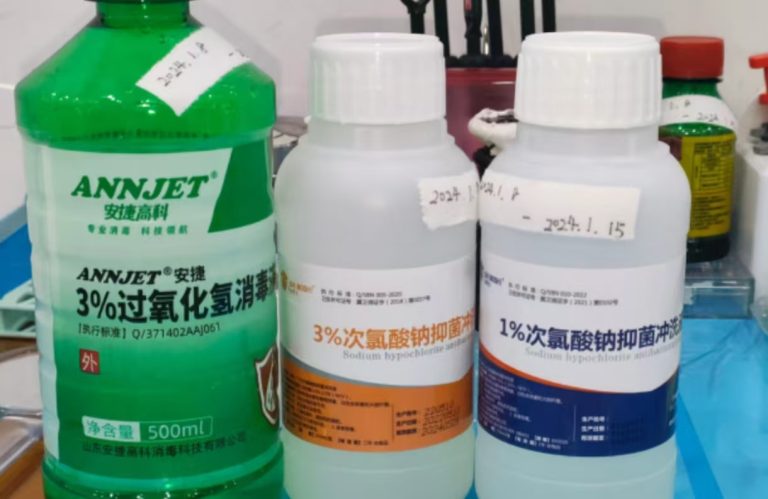Optimization of the synthesis process of methylamine hydrochloride
Overview of Methylamine Hydrochloride Synthesis
Methylamine hydrochloride is a widely used chemical compound with applications in pharmaceuticals, agrochemicals, and more. Its synthesis is a critical step in ensuring high-quality production at scale. To optimise this process, it’s essential to understand the chemical structure, traditional methods, and challenges that impact efficiency and sustainability.
Chemical Structure and Properties
At its core, methylamine hydrochloride is the hydrochloride salt of methylamine, with the chemical formula CH₅N·HCl. This formula highlights its makeup—a single methyl group (CH₃), an amine group (NH₂), and an attached hydrogen chloride (HCl) unit. It appears as a crystalline, white powder that’s highly soluble in water, making it ideal for various industries.
The chemical properties of methylamine hydrochloride play a huge role in its synthesis. Its solubility and stability under certain conditions make it an accessible choice for chemical processes. However, these same properties mean that it can be hygroscopic, absorbing moisture from the air, which requires careful handling to maintain purity during production. Additionally, its behaviour as a protonated amine in acidic solutions defines its reactions, particularly when forming via hydrochloric acid treatments. These properties must be fully understood to streamline the synthesis process while maintaining high material quality.
Traditional Synthesis Methods
The traditional method of producing methylamine hydrochloride involves reacting methylamine gas (CH₃NH₂) with hydrochloric acid (HCl). This acid-base reaction is straightforward:
CH₃NH₂ + HCl → CH₃NH₃Cl
This reaction produces methylamine hydrochloride as a solid precipitate. Typically, the process is carried out in an aqueous solution, where the solid product is crystallised out by cooling the mixture. While simple in theory, there are practical inefficiencies. For instance:
- High water use during recrystallisation steps.
- Energy consumption to control temperatures.
- Product losses during filtration or drying phases.
Another approach uses methylamine from methanol and ammonia with hydrogen chloride gas introduced downstream. Though effective, these methods often require specific conditions like high pressure, raising energy requirements and costs.
Key Challenges in Current Practices
While the synthesis process is well-established, it’s not without its problems. Current methods can be refined to address several challenges:
- Inefficiencies in Yield: Side reactions or losses during crystallisation can reduce output. This impacts industrial scalability and cost-effectiveness.
- Environmental Concerns: Excess usage of water and energy creates a significant environmental burden. Additionally, emissions from handling methylamine gas or HCl need proper containment to avoid environmental harm.
- Cost of Raw Materials: Dependence on specific feedstocks or conditions can make the process financially restrictive, especially as demand increases globally.
- Material Purity Issues: Impurities introduced during synthesis or inconsistencies in crystallisation can compromise product quality. For applications in sensitive areas like pharmaceuticals, fine-tuning purity is paramount.
These limitations underline the importance of optimising the synthesis process not just for better efficiency, but to meet modern sustainability and quality standards. By addressing these pain points, the production process can become more refined, reliable, and eco-friendly.
Parameters Influencing Optimisation
Optimising the synthesis of methylamine hydrochloride relies on controlling a range of factors. Each step in the process affects the yield, quality, and overall efficiency. From precise reaction conditions to material selection and the use of catalysts, every detail plays a role. Let’s explore these parameters in detail.
Role of Reaction Conditions
Reaction conditions like temperature and pressure are critical in determining how efficient and effective the synthesis process will be. If these factors aren’t controlled, you could run into unnecessary side reactions or poor yields, which is the last thing anyone wants.
- Temperature: The synthesis reaction requires a controlled temperature to proceed efficiently. If the temperature is too low, the reaction may slow down and fail to reach completion. On the flip side, excessive heat can trigger side reactions, potentially reducing the purity of the product. Maintaining a medium-range temperature—often between 20°C and 50°C for this process—is generally ideal. Cooler conditions assist crystallisation, helping solid methylamine hydrochloride form cleanly.
- Pressure: Working with gases like methylamine means handling pressure carefully. Low pressure can reduce the reaction rate, while high pressure may lead to equipment strain or unsafe conditions. Moderate pressure levels ensure stable interaction between methylamine gas and hydrochloric acid, balancing safety with efficiency.
Meticulously managing these factors ensures you’re not wasting energy while maxing out the reaction’s potential.PubChem.
Selection of Raw Materials
When it comes to chemistry, the saying “you get out what you put in” couldn’t be more true. High-purity raw materials have a direct impact on both the yield and quality of the final product.
- Methylamine Source: Methylamine gas should have a high purity level, as contaminants can lead to unwanted by-products during the reaction. Lower-purity reactants not only reduce the efficiency but also make downstream filtration or purification more tedious.
- Hydrochloric Acid Grade: Using laboratory or industrial-grade hydrochloric acid ensures consistent reactivity. Impurities in HCl can affect reaction rates and product stability. Selecting an acid free of heavy metals or organic impurities can save you from future rework.
For best results, it’s smart to prioritise reliable suppliers offering consistent material quality. Spending a bit more upfront can save significant time and cost during the manufacturing process.
Use of Catalysts
Catalysts can transform how quickly and efficiently a reaction takes place. While the formation of methylamine hydrochloride doesn’t typically require exotic catalysts, certain synthetic pathways or scaled-up systems may benefit greatly from their use.
- Reaction Speed and Yield: Catalysts lower the energy required for the reaction, making synthesis faster without needing extreme temperatures or pressures. For example, if you’re using a synthesis pathway involving methylamine derived from methanol with ammonia, catalysts like alumina or silica-based composites can enhance reaction efficacy.
- Improving Efficiency: Some processes see gains in efficiency when trace amounts of catalytic agents—such as zinc chloride or titanium tetrachloride—are added. These substances are especially beneficial if your synthesis involves secondary steps or by-product recycling.
Keep in mind that catalysts also need to be removed or neutralised post-reaction to prevent contamination. So, ensure your process accommodates easy catalyst recovery to maintain final product purity.
By fine-tuning these factors, the overall synthesis can become a streamlined system. Small tweaks often result in substantial improvements, bringing you closer to an optimal process.
Techniques for Process Optimisation
Creating a more efficient pathway to synthesise methylamine hydrochloride is key to saving time, cutting costs, and improving sustainability. Whether you’re producing this compound on a laboratory or industrial scale, tweaking the process can yield big benefits. From exploring better reaction routes to implementing groundbreaking technologies, several methods exist to optimise the production cycle without sacrificing quality.

Improved Reaction Pathways
One of the first steps in optimising any synthesis process is to evaluate whether your current reaction pathway is the most efficient. The traditional method of reacting methylamine gas with hydrochloric acid is straightforward but not without limitations. Exploring alternative pathways can uncover opportunities for a higher yield or reduced energy consumption.guide to catalysis
Some options worth considering:
- Alternative Reactants: Using intermediates like methylamine solutions rather than gaseous methylamine may simplify handling and reduce safety risks, particularly in large-scale applications. These alternatives can also minimise losses during processing.
- Modified Conditions: Slight alterations to pressure, temperature, or reaction durations could help limit unwanted side reactions. For instance, maintaining a carefully controlled mixing rate can lead to faster reaction completion while sustaining product quality.
- Redefined Processing Steps: If recrystallisation is a bottleneck, other methods such as spray drying or solvent evaporation may work better. These steps could not only improve the recovery rate but also reduce energy and time requirements.
The right pathway depends on your unique setup, but regularly assessing your chosen approach helps you stay both efficient and competitive.
Automation in Synthesis
Process automation is a game changer when it comes to running chemical reactions efficiently and consistently. By integrating automation technologies, you can have real-time control over critical variables like reaction temperature, pressure, and mixing speeds.
Why is automation such a big deal? Here’s what it brings to the table:
- Increased Precision: Manual monitoring often leaves room for error. Automation ensures consistent measurements, creating optimum conditions throughout the synthesis process.
- Real-Time Analytics: Automated systems can adjust parameters instantly based on sensor input. If the reaction starts to drift from ideal conditions, the system corrects it before any major issues arise.
- Time Savings: With systems running independently, researchers and technicians can focus on higher-priority work rather than babysitting reactions.
Technologies like automated reaction calorimeters or in-line spectroscopic sensors shine in these situations. These tools provide insights into reaction kinetics, helping you fine-tune parameters without interrupting production. Plus, automation ensures better repeatability, especially in scaling from lab to industrial production.
Quality Control Practices
What good is production efficiency if the final product doesn’t meet quality standards? Ensuring the synthesis process consistently delivers high-purity methylamine hydrochloride is non-negotiable, especially for pharmaceutical-grade applications. Analytical techniques play a starring role in maintaining quality through every batch.
Some commonly employed methods for monitoring and maintaining quality include:
- Spectroscopy: Techniques like FTIR (Fourier-transform infrared spectroscopy) or UV-visible spectroscopy allow you to quickly identify impurities or confirm product identity. These are efficient tools for quality checks at multiple points in the synthesis process.
- Chromatography: High-performance liquid chromatography (HPLC) or gas chromatography (GC) helps measure product purity levels. These techniques separate compounds, offering a detailed look at whether any unwanted by-products remain in the final compound.
- Moisture Analysis: Since methylamine hydrochloride is hygroscopic, tools like Karl Fischer titration are useful in determining water content. Ensuring proper drying stages have been completed avoids issues like clumping or reduced purity.







